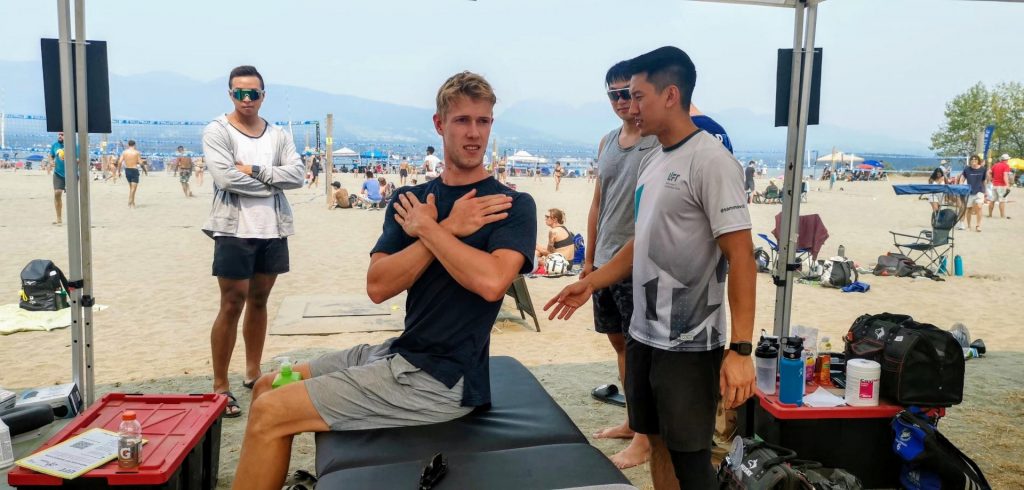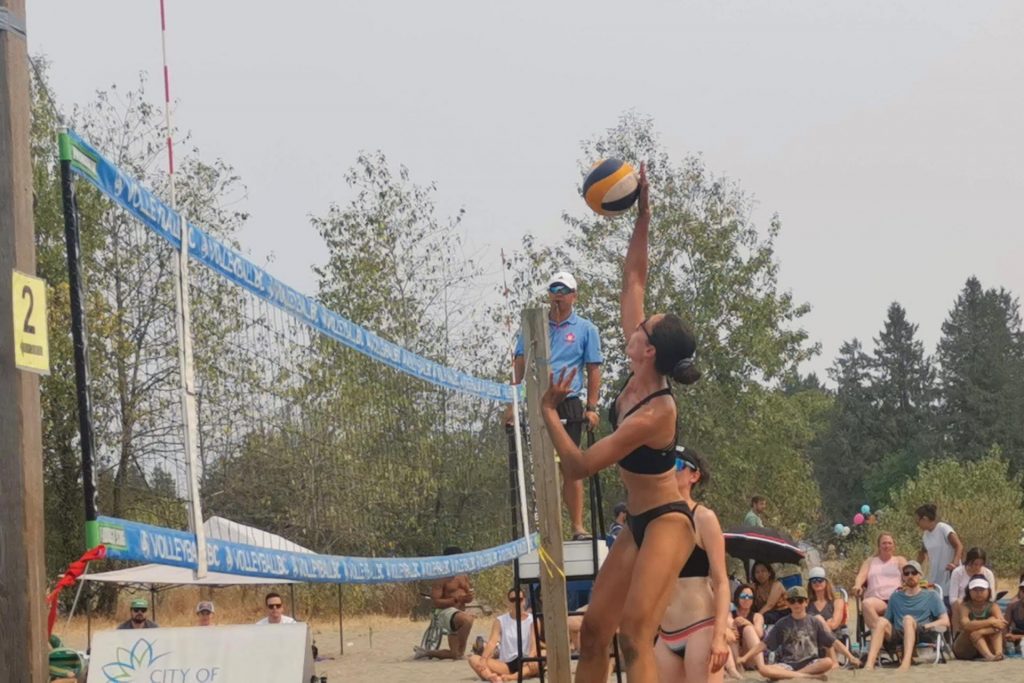If you’ve played beach volleyball for more than a week, you’ve probably seen or heard someone complaining of shoulder pain…
What you need to know about shoulder pain in Beach Volleyball:
The most important things we’d like everyone to know about shoulder pain are:
1) Most shoulder pains in beach volleyball are completely preventable and possible to rehabilitate/overcome.
2) The frame of mind we adopt here at Lift Clinic is more about injury prevention and optimal performance. This is so that you can train and play at 100% without feeling limited, or losing power/accuracy at any point.
3) Shoulder pain comes on for many reasons – it’s possible to assess for these factors whether or not you currently have shoulder pain.
4) Two of the most common limitations that underlie shoulder weakness, mobility limitations and pain are stiffness in the neck and thoracic (mid to upper back/chest) regions.

External Factors: why do beach volleyball athletes get shoulder pain?
External factors are things outside of your control that affect your risk of injury. Here’s an example:
Picture this: it’s match point, a little windy, you’re tired but you are driven to win. Your partner makes an amazing set and you approach across the sand (not the easiest surface to move on). Estimating the best position to be in based on the trajectory of the ball, you launch into the air. You quickly judge the position of defense (also not easy to do) and adjust your body position slightly to accommodate a match-winning cut shot. Suddenly the wind blows your partner’s beautiful set a few inches in a random direction (oh no!). Very quickly you find yourself reaching, reacting and making a last minute change to your movement. You contact the ball with a less than satisfying smack, and feel a sudden jab of pain.

Internal Factors: why do beach volleyball athletes get shoulder pain
Internal factors are things within your own body or within your control that affect your risk of shoulder injury.
Here are a few examples:
- Previous shoulder pain that hasn’t been fully addressed.
- Neck or thoracic pain or mobility limitations.
- Strength and mobility limitations within the shoulder itself.
- Poor training or poor quality movement pattern during hitting, serving or diving.
